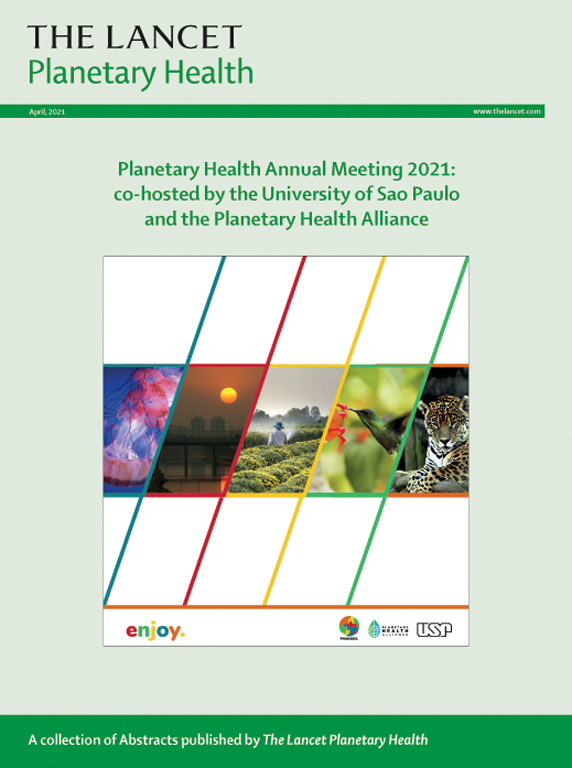Is growth in consumption occurring where it is most needed? An empirical analysis of current energy and material trends
IF 21.6
1区 医学
Q1 ENVIRONMENTAL SCIENCES
引用次数: 0
Abstract
Background
Increasing global use of energy and materials is breaching planetary boundaries, but large inequalities mean that billions of people still cannot meet basic needs. Researchers have estimated minimum energy and material requirements to secure human wellbeing. However, it remains unclear whether countries with shortfalls in energy and material use are increasing their consumption towards sufficient levels, and whether countries with surplus consumption are reducing theirs to sustainable levels.
Methods
In this empirical modelling study, we compared large datasets of national energy and material footprints with estimates of the energy and material required for each country to bring its poorest populations up to decent living standards (DLS). We then estimated the share of countries that are in shortfall and in surplus, for both energy and material consumption, and assessed to what degree countries are moving in the right direction, given existing growth rates. For countries with consumption shortfalls, we calculated the time it will take, at current growth rates, to reach energy and material use sufficient for DLS.
Findings
The world currently uses more energy and materials than is required to achieve DLS for all (approximately 2·5 times more), even with existing within-country distributions (approximately 1·5 times more). However, 50% of nations currently have energy shortfall, and 46% have material shortfall. For most of these countries, growth in energy and material use is too slow to achieve DLS by 2050. Indeed, with current growth rates and national inequalities, at least one in five countries will remain in shortfall in 2100. By contrast, the growth rates of countries in surplus are four times higher than the growth rates of countries in shortfall, exacerbating ecological pressures.
Interpretation
Currently, the world is not moving towards a just and ecological future for all. Growth in energy and material use is occurring primarily in countries that do not need it and is not occurring fast enough (or is declining) in countries that do need it. A substantial redistribution of energy and material use is needed—both within countries and between them—to achieve faster progress on DLS with less ecological pressure. Indeed, this redistribution is imperative if we are to achieve DLS for all while also achieving the Paris Agreement objectives. Convergence between the Global North and South is necessary but is not occurring fast enough. At current rates, convergence will not occur within the next 100 years.
Funding
European Research Council.
消费增长是否发生在最需要增长的地方?对当前能源和材料趋势的实证分析
全球能源和材料使用量的增加正在突破地球的界限,但巨大的不平等意味着数十亿人仍然无法满足基本需求。研究人员估计了确保人类健康的最低能量和物质需求。然而,目前尚不清楚的是,能源和材料使用不足的国家是否正在将其消费增加到足够的水平,而消费过剩的国家是否正在将其消费减少到可持续的水平。在这项实证建模研究中,我们将国家能源和材料足迹的大型数据集与每个国家将其最贫困人口提高到体面生活水平(DLS)所需的能源和材料估计数进行了比较。然后,我们估计了能源和材料消费短缺和盈余的国家所占比例,并评估了各国在多大程度上朝着正确的方向前进,考虑到现有的增长率。对于消费不足的国家,我们计算了以目前的增长速度达到DLS所需的能源和材料使用所需的时间。目前世界上使用的能源和材料比实现所有人的DLS所需的要多(大约多2.5倍),即使是国家内部分布(大约多1.5倍)。然而,目前有50%的国家存在能源短缺,46%的国家存在物质短缺。对这些国家中的大多数来说,能源和材料使用的增长太慢,无法在2050年前实现DLS。事实上,按照目前的增长速度和国家间的不平等,到2100年,至少五分之一的国家仍将处于短缺状态。相比之下,顺差国家的增长率是逆差国家增长率的四倍,加剧了生态压力。当前,世界并没有走向一个公正和生态的未来。能源和材料使用的增长主要发生在不需要它的国家,而在确实需要它的国家,增长速度不够快(或正在下降)。在国家内部和国家之间,需要对能源和材料的使用进行实质性的再分配,以便在减少生态压力的情况下实现更快的DLS进展。事实上,如果我们要实现所有人的可持续发展目标,同时实现《巴黎协定》的目标,这种再分配是必不可少的。全球南北之间的融合是必要的,但速度还不够快。按照目前的速度,未来100年内不会出现融合。资助欧洲研究委员会。
本文章由计算机程序翻译,如有差异,请以英文原文为准。
求助全文
约1分钟内获得全文
求助全文
来源期刊

Lancet Planetary Health
Multiple-
CiteScore
28.40
自引率
2.30%
发文量
272
审稿时长
8 weeks
期刊介绍:
The Lancet Planetary Health is a gold Open Access journal dedicated to investigating and addressing the multifaceted determinants of healthy human civilizations and their impact on natural systems. Positioned as a key player in sustainable development, the journal covers a broad, interdisciplinary scope, encompassing areas such as poverty, nutrition, gender equity, water and sanitation, energy, economic growth, industrialization, inequality, urbanization, human consumption and production, climate change, ocean health, land use, peace, and justice.
With a commitment to publishing high-quality research, comment, and correspondence, it aims to be the leading journal for sustainable development in the face of unprecedented dangers and threats.
 求助内容:
求助内容: 应助结果提醒方式:
应助结果提醒方式:


